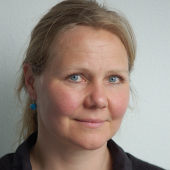
Ecosystem Services of Seaweed Production – a critical appraisal
Ecosystem Services of Seaweed Production – a critical appraisal
Annette Bruhn, Senior Researcher, Aarhus University, Department of Ecoscience, Denmark

Ecosystem Services of Seaweed Production – a critical appraisal
Annette Bruhn, Senior Researcher, Aarhus University, Department of Ecoscience, Denmark
About the speaker:
Annette Bruhn (AB) works as senior researcher at the Department of Ecoscience at Aarhus University, Denmark. Her research focus is cultivation of macroalgae for emission capture and utilisation, optimising the use of macroalgae as a bio-resource and a solution for mitigating eutrophication and climate change. AB works in the cross field between biological oceanography and macroalgae ecophysiology, and always in transdisciplinary teams in cooperation with authorities and industry/SMEs. AB is co-founder of AlgaeCenter Denmark and the annual international Nordic Seaweed Conference, and leads the Marine Bioresource platform of the Aarhus University Center for Circular Bioeconomy.
Company info:
Aarhus University is the second largest and second oldest university in Denmark, with 36 thousand students and 8.5 thousand employees. The university was founded in 1928 in Aarhus, Denmark. It comprises five faculties, Arts, Natural Sciences, Technical Sciences, Health, and Business and Social Sciences. It is home to over thirty internationally recognised research centres.
Department of Ecoscience, Faculty of Technical Sciences, delivers high ranking research and advisory work in the fields of Marine, Freshwater and Terrestrial Ecosystems globally, with special focus on Denmark and the Arctic.
Presentation:
Seaweed production provides a number of ecosystem services (ESS), defined as ‘the benefits people obtain from ecosystems’. While seaweed grows it provides important ESS such as the regulation and maintenance of biogeochemical flows of nitrogen, phosphorus and carbon, the regulation of pH and production of oxygen; while at the same time, the seaweed - if cultivated in the sea, also provides habitat, shelter and feed for other marine organisms. Once harvested, the seaweed provides biomass for food, feed, materials, and nutraceutical. Often overlooked are the cultural ESS, as seaweed production contributes to science, nature experiences, art and folklore.
While we often hear the positive stories of seaweed ESS, many are not aware of the existing frameworks and classifications, not only for ESS, but also e.g. for carbon sequestration. Overselling the good stories, in particular regarding increased marine biodiversity and climate benefits of seaweed production, risk to negatively impact the seaweed industry as a whole. If the seaweed industry is to benefit from positive image creation and - in future, tangible economic benefits from carbon, nutrient or biodiversity credit systems, the ESS related to seaweed production need to be quantified using standardized systems, many of which do not yet exist. In addition, site specific conditions need to be included in seaweed farm management to optimize local ESS.
It is imperative to adhere to existing defined standards, to develop reproducible methods and systems for yet non-existing standards and to optimize production management accordingly. This requires collaboration between science, industry and authorities.